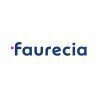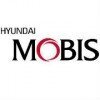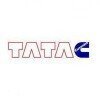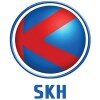
Filter interviews by
Motherson Automotive Technologies and Engineering Interview Questions and Answers
91 Interview questions
A process engineer designs, optimizes, and manages industrial processes to improve efficiency and quality in production.
Analyzes existing processes to identify inefficiencies and areas for improvement.
Develops and implements new processes or modifications to enhance productivity.
Utilizes tools like Six Sigma and Lean methodologies to streamline operations.
Collaborates with cross-functional teams, including R&D...
Injection moulding is a manufacturing process for producing parts by injecting molten material into a mould.
Process involves heating plastic pellets until they melt.
The molten plastic is injected into a mould under high pressure.
Once cooled, the mould is opened to release the solidified part.
Commonly used for producing items like bottle caps, containers, and automotive parts.
Can be used with various materials, inc...
A transformer is an electrical device that transfers electrical energy between circuits through electromagnetic induction.
Transforms voltage levels: steps up or steps down voltage.
Consists of primary and secondary coils wound around a core.
Used in power distribution systems to manage voltage levels.
Example: A step-down transformer reduces 220V to 12V for household appliances.
Efficiency is high, typically above 95%...
A three-phase motor is an electric motor powered by three-phase alternating current, providing efficient and reliable operation.
Consists of three windings, each 120 degrees apart in phase.
Commonly used in industrial applications for its efficiency.
Examples include pumps, fans, and conveyor systems.
Offers higher power density and smoother operation compared to single-phase motors.
Can be either synchronous or asynch...
DG full load current refers to the maximum current a diesel generator can deliver at full capacity.
Full load current is calculated using the formula: Current (I) = Power (P) / (Voltage (V) × √3) for three-phase systems.
For example, a 100 kVA generator at 400V would have a full load current of approximately 144.34 A.
Understanding full load current is crucial for selecting appropriate circuit breakers and cables.
It ...
Civil work involves the construction, maintenance, and design of infrastructure such as buildings, roads, bridges, and dams.
Civil work includes construction of buildings, roads, bridges, and other infrastructure.
It involves planning, designing, and executing projects to ensure structural integrity and safety.
Civil engineers work with materials like concrete, steel, and asphalt to create durable structures.
Maintena...
I have over five years of experience in accounts and finance, managing budgets, audits, and financial reporting.
Managed a budget of $1 million for a mid-sized company, ensuring all expenses were tracked and reported accurately.
Conducted quarterly audits that resulted in a 15% reduction in unnecessary expenditures.
Implemented a new financial reporting system that improved reporting efficiency by 30%.
Collaborated wi...
Paint process involves surface preparation, priming, painting, and curing to achieve a durable and aesthetically pleasing finish.
Surface preparation: Cleaning, sanding, and masking the surface to ensure proper adhesion of the paint.
Priming: Applying a primer to improve paint adhesion and corrosion resistance.
Painting: Applying the desired paint color using techniques like spraying, brushing, or dipping.
Curing: All...
We use high-quality automotive paint specifically designed for durability and a flawless finish.
High-quality automotive paint is used for long-lasting results
The paint is designed to withstand environmental factors and provide a flawless finish
Examples of paint brands commonly used include PPG, Axalta, and Sherwin-Williams
FITS is a file format used in astronomy to store images and data. Tell it types are FITS files that contain tables of data.
FITS stands for Flexible Image Transport System and is commonly used in astronomy to store images and data.
Tell it types are FITS files that contain tables of data, such as catalogs of astronomical objects.
FITS files can store multiple data arrays and tables in a single file, making them versa...
Motherson Automotive Technologies and Engineering Interview Experiences
127 interviews found
I applied via Campus Placement and was interviewed in Nov 2024. There were 4 interview rounds.
It been from your studies and some from general knowledge and few are technical
GD is about the new technology in automotive industry
(3 Questions)
- Q1. It's about me and my family
- Q2. Technical questions from polymer materials
- Q3. My experience in industry
- Ans.
I have 5 years of experience working in the automotive industry as a mechanical engineer.
Designed and implemented new components for vehicles
Performed testing and analysis on vehicle systems
Collaborated with cross-functional teams to solve engineering challenges
(2 Questions)
- Q1. Explanation about my projects
- Ans.
I have worked on various projects including designing a new software system for a manufacturing company and implementing a renewable energy solution for a community.
Designed and implemented a new software system for a manufacturing company to streamline production processes
Developed a renewable energy solution for a community by installing solar panels and wind turbines
Collaborated with a team of engineers to optimize ...
- Q2. How is injection molding machine working and new technology development in machine's
- Ans.
Injection molding machine works by melting plastic pellets and injecting the molten material into a mold to create a solid object.
Plastic pellets are fed into a heated barrel where they are melted
The molten plastic is then injected into a mold cavity under high pressure
The plastic cools and solidifies in the mold, taking its shape
New technology developments include faster cycle times, improved energy efficiency, and en...
Interview Preparation Tips
I applied via Campus Placement and was interviewed in Nov 2024. There were 3 interview rounds.
(2 Questions)
- Q1. What is the job in this company?
- Q2. I need supervisor in quality assurance.
(2 Questions)
- Q1. Am I eligible for your company or not?
- Q2. I will work honestly in your company.
(1 Question)
- Q1. I will work hard and smart in your company.
Interview Preparation Tips
(4 Questions)
- Q1. What are the Paint process?
- Ans.
Paint process involves surface preparation, priming, painting, and curing to achieve a durable and aesthetically pleasing finish.
Surface preparation: Cleaning, sanding, and masking the surface to ensure proper adhesion of the paint.
Priming: Applying a primer to improve paint adhesion and corrosion resistance.
Painting: Applying the desired paint color using techniques like spraying, brushing, or dipping.
Curing: Allowing...
- Q2. What type of paint using?
- Ans.
We use high-quality automotive paint specifically designed for durability and a flawless finish.
High-quality automotive paint is used for long-lasting results
The paint is designed to withstand environmental factors and provide a flawless finish
Examples of paint brands commonly used include PPG, Axalta, and Sherwin-Williams
- Q3. What is ppm? How to calculated ppm?
- Ans.
PPM stands for parts per million, a unit of measurement used to represent very small concentrations of substances.
PPM is calculated by dividing the mass of the solute by the total mass of the solution and then multiplying by 1,000,000.
For example, if a solution contains 2 grams of solute in 1000 grams of solution, the PPM would be 2000.
PPM is commonly used in various industries to measure the concentration of pollutant...
- Q4. What is PPAP? What are they? Explain?
- Ans.
PPAP stands for Production Part Approval Process. It is a standardized process in the automotive industry to ensure suppliers meet quality standards before production.
PPAP is a set of documents and procedures used to ensure that a supplier's parts meet the customer's requirements.
It includes documentation such as design records, engineering change documents, process flow diagrams, control plans, etc.
PPAP is typically r...
Interview Preparation Tips
I applied via Recruitment Consulltant and was interviewed in Oct 2024. There was 1 interview round.
(2 Questions)
- Q1. Plastic parts related only?
- Q2. Shrinkage of plastic part?
- Ans.
Shrinkage of plastic part is the reduction in size of a plastic component during cooling after molding.
Shrinkage occurs due to the cooling process after the plastic part is molded.
Factors affecting shrinkage include material type, mold design, processing conditions, and part geometry.
Shrinkage is typically expressed as a percentage of the original dimensions.
Compensating for shrinkage is important in designing molds an...
Interview Preparation Tips
- Plastic Injection Molding
- Plastic Product Design
- Trim design
- Concept Design
- Open thinking
- Creative mindset
Which question asking me interview.
Cad test
Interview level is hard.
Pls note down my mail id. Any questions asking me in this mail id. I will help you regarding this interviews.
*****
I appeared for an interview in May 2025, where I was asked the following questions.
- Q1. What are you doing good management
- Ans.
Good management involves effective planning, communication, and resource allocation to achieve organizational goals efficiently.
Clear Communication: Ensuring all team members understand their roles and responsibilities, like holding regular meetings to discuss progress.
Effective Planning: Setting realistic goals and timelines, such as using project management tools to track tasks and deadlines.
Resource Allocation: Dist...
- Q2. What are you doing your team do working
- Ans.
I ensure my team collaborates effectively, focusing on communication, task delegation, and problem-solving to achieve our goals.
Encourage open communication: Regular team meetings to discuss progress and challenges.
Delegate tasks based on strengths: Assign roles that align with each member's skills, like a technician focusing on equipment maintenance.
Foster a supportive environment: Create a culture where team members ...
Interview Preparation Tips
I applied via Company Website and was interviewed before Feb 2022. There was 1 interview round.
(5 Questions)
- Q1. About injection molding machine
- Ans.
An injection molding machine also known as a injection press,is a machine for manufacturing plastic products by injection molding process it's consist of two parts an injection unit and a clamping unit
- Q2. Technical problem
- Ans.
All shift isse like temperature problem, machine problem
- Q3. MTC problems and hopper problem,hrtc problem
- Ans.
All problem like MTC motor not runnig and hooper material not heating and hrtc not working properly
- Q4. Motor overload problem
- Ans.
Motor overload problem can be caused by various factors such as high current draw, mechanical issues, or incorrect settings.
Check for high current draw which may indicate a problem with the motor or the load it is driving.
Inspect for mechanical issues such as bearing failure or misalignment that could lead to increased resistance and overload.
Verify that the motor settings, such as voltage and current limits, are corre...
- Q5. Heater contactor problem
- Ans.
The heater contactor problem may be caused by issues with the electrical connections, the contactor itself, or the control system.
Check the electrical connections for loose or damaged wires
Inspect the contactor for signs of wear or damage
Test the control system to ensure it is functioning properly
Consider environmental factors that may be affecting the contactor, such as temperature or moisture
(2 Questions)
- Q1. Pneumatic system
- Q2. Read drawing
Machine ailment
(1 Question)
- Q1. Assembly installation modification
Interview Preparation Tips
I applied via Naukri.com
(2 Questions)
- Q1. Mould maintenance, breakdown maintenance
- Q2. MTTR MTBF Flash Mould safety
(2 Questions)
- Q1. Kaizen Improvements
- Q2. Core skills - Welding HRS system maintenance
(2 Questions)
- Q1. Family back ground, self introduction
- Q2. Previous company details
(1 Question)
- Q1. Salary negotiation
I applied via Naukri.com and was interviewed in Nov 2024. There were 2 interview rounds.
Coding test with multiple questions around DSA
(2 Questions)
- Q1. Dot net questions
- Q2. Oops questions
(5 Questions)
- Q1. Types of tools ?
- Ans.
Types of tools include hand tools, power tools, cutting tools, measuring tools, and fastening tools.
Hand tools: Screwdrivers, hammers, wrenches
Power tools: Drills, saws, sanders
Cutting tools: Knives, scissors, shears
Measuring tools: Tape measures, rulers, calipers
Fastening tools: Nail guns, staple guns, screws
- Q2. What is the thickness of the part?
- Ans.
The thickness of the part is 2.5 millimeters.
The thickness of the part is a critical dimension that needs to be accurately measured.
It is important to ensure that the part meets the required thickness specifications.
Examples of tools used to measure thickness include calipers, micrometers, and thickness gauges.
- Q3. What is the use of vernier ?
- Ans.
Vernier is a measuring instrument used for more precise measurements than a regular scale or ruler.
Vernier is used to measure small distances with high accuracy.
It consists of a main scale and a sliding vernier scale that allows for more precise readings.
Vernier calipers are a common type of vernier used in engineering and machining.
Vernier is commonly used in tool rooms for accurate measurements of tools and component...
- Q4. How to do PM of mold
- Ans.
PM of mold involves regular inspection, cleaning, lubrication, and replacement of parts to ensure optimal performance.
Inspect mold for wear and damage
Clean mold surfaces regularly to prevent buildup of debris
Lubricate moving parts to reduce friction and wear
Replace worn or damaged parts as needed to maintain quality of output
Keep detailed records of maintenance activities for future reference
- Q5. How to check history card?
- Ans.
History card can be checked by reviewing the documented information related to a particular tool or equipment.
Review the history card for details on maintenance, repairs, inspections, and usage of the tool or equipment.
Check for dates of previous maintenance activities and any issues reported during inspections.
Verify that all required information is properly documented on the history card.
Ensure that the history card ...
Interview Preparation Tips
Top trending discussions






Motherson Automotive Technologies and Engineering Interview FAQs
The duration of Motherson Automotive Technologies and Engineering interview process can vary, but typically it takes about less than 2 weeks to complete.
Tell us how to improve this page.
Motherson Automotive Technologies and Engineering Interviews By Designations
- Motherson Automotive Technologies and Engineering Engineer Interview Questions
- Motherson Automotive Technologies and Engineering Design Engineer Interview Questions
- Motherson Automotive Technologies and Engineering Assistant Engineer Interview Questions
- Motherson Automotive Technologies and Engineering Trainee Technician Interview Questions
- Motherson Automotive Technologies and Engineering Senior Engineer Interview Questions
- Motherson Automotive Technologies and Engineering Quality Inspector Interview Questions
- Motherson Automotive Technologies and Engineering Quality Engineer Interview Questions
- Motherson Automotive Technologies and Engineering Graduate Engineer Trainee (Get) Interview Questions
- Show more
Interview Questions for Popular Designations
- Design Engineer Interview Questions
- Engineer Interview Questions
- Trainee Technician Interview Questions
- Assistant Engineer Interview Questions
- Analyst Interview Questions
- Associate Software Engineer Interview Questions
- Graduate Engineer Trainee (Get) Interview Questions
- Java Developer Interview Questions
- Show more
Overall Interview Experience Rating
based on 175 interview experiences
Difficulty level
Duration
Interview Questions from Similar Companies
Motherson Automotive Technologies and Engineering Reviews and Ratings
based on 1.7k reviews
Rating in categories
|
Engineer
350
salaries
| ₹3.3 L/yr - ₹6.8 L/yr |
|
Assistant Engineer
292
salaries
| ₹2 L/yr - ₹6 L/yr |
|
Assistant Manager
251
salaries
| ₹6.3 L/yr - ₹14 L/yr |
|
Senior Engineer
239
salaries
| ₹4.8 L/yr - ₹10.5 L/yr |
|
Trainee Technician
234
salaries
| ₹1.3 L/yr - ₹3.6 L/yr |

Delphi TVS

Belrise Industries

Krishna Maruti

Faurecia
- Home >
- Interviews >
- Motherson Automotive Technologies and Engineering Interview Questions












